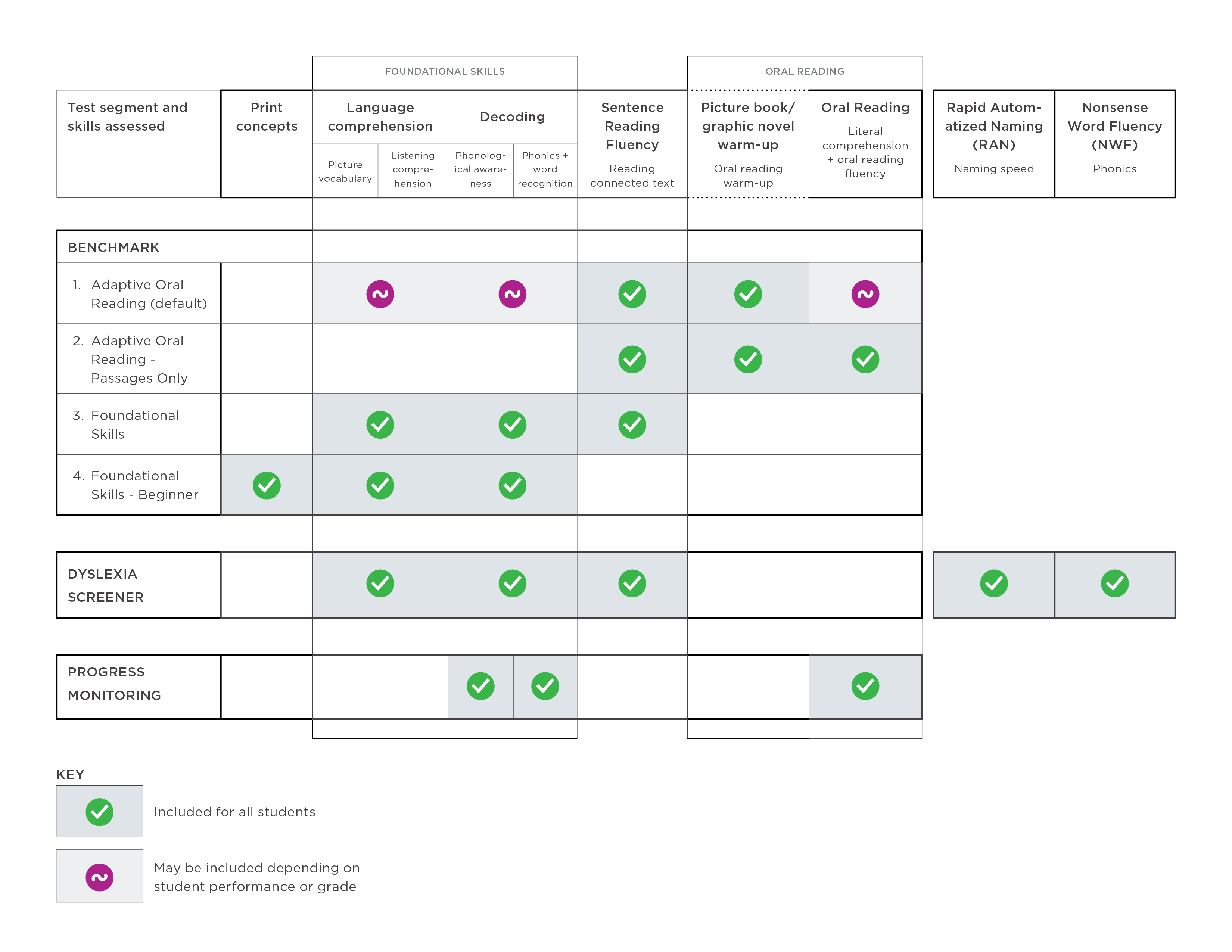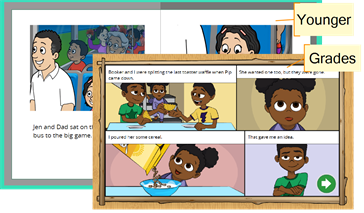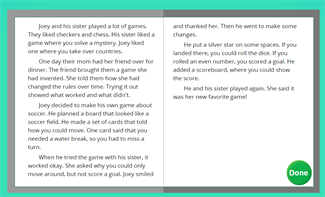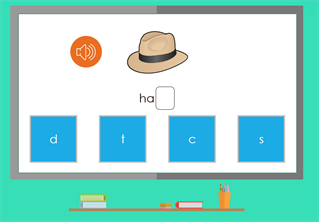
More help:
NWEA Support
Have an idea?
Share it!
Benchmark Tests
Benchmark test types are intended to be given once per term to assess students’ oral reading fluency, literal comprehension, and/or foundational reading skills. The Benchmark test also administers a universal screener that can identify students with possible reading difficulty. Within the Benchmark test assignment, there are four Benchmark Test Subtypes, depending on which specific skills you plan to assess.
Benchmark Test Quick Facts
| Recommended grade levels | Pre-K through 5 |
| Test Content | Oral reading fluency, literal comprehension, and/or foundational reading skills, depending on Benchmark Test Subtypes assigned; universal screening for possible reading difficulty* |
| Administration types | Onsite and remote |
| Frequency | Three times per year |
| Test time | About 20 minutes to assess an entire class simultaneously |
| Accessibility | Audio instruction, color contrast adjustment, and magnification |
| Technology required | Devices and headsets for each student |
| Languages | English and Spanish* |
*Universal screening is available in all English Benchmark tests except for the Foundational Skills – Beginner test subtype. Universal screener outcomes are not available for Spanish MAP Reading Fluency at this time.
Benchmark Test Subtypes
Within the Benchmark test are four test subtypes that allow you to be as general or specific as you’d like about which of your students’ skills to assess.
-
Adaptive Oral Reading (recommended for most students): This most adaptive option assesses students on Foundational Skills or oral reading fluency, depending on performance during the test and grade
-
Adaptive Oral Reading - Passages Only: Assesses students on oral reading skills only
-
Foundational Skills: Assesses students on Foundational Skills only
-
Foundational Skills - Beginner: Assesses students on print concepts and early Foundational Skills only
Test Segments and Skills Assessed in Each Test Type

To learn more about each of these test segments, please refer to the MAP Reading Fluency Technical report.
For test design and specifications for the Spanish assessment, please refer to the Spanish MAP Reading Fluency Content Guide.
For all students:
-
Adaptive Oral Reading
Appropriate for grades K–5
Adaptive Oral Reading is the most adaptive and versatile test subtype. It can cover foundational skills up to oral reading fluency, depending on what your students are ready to learn. This is why it’s the recommended test for most students in kindergarten to grade 5.
After a quick warm-up, the test uses a sentence reading fluency measure to determine whether students are still working on their foundational skills, or if they’re ready to read aloud. It will then adapt accordingly, either assessing students on foundational skills or oral reading.* The foundational skills portion of the test assesses students on Phonological Awareness, Phonics and Word Recognition, and Language Comprehension (vocabulary and listening comprehension). The oral reading portion assesses literal comprehension by requiring students to read three passages aloud and answer simple comprehension questions about each one.
*Students in grade 4 and above will be automatically routed into oral reading measures regardless of performance on the Sentence Reading Fluency measure. Students in grade 1 and below who route to Oral Reading may be tested on Language Comprehension measures (picture vocabulary and listening comprehension) in lieu of a third passage. This occurs only when students demonstrate low comprehension of both the first and second passages.
Refer to the Test Segments and Skills Assessed in Each Test Type table to see exactly which test segments are included in this test subtype.
For students reading connected text:
-
Adaptive Oral Reading - Passages Only
Appropriate for grade 2 (winter and spring) and grades 3–5
The Adaptive Oral Reading - Passages Only subtype assesses reading comprehension by having students read three passages aloud and answer simple comprehension questions about each one. The complexity of the first passage is determined by the student’s grade level and time of year; the subsequent passages will adapt in text complexity depending on how the student performs. This test option is recommended only for students who have demonstrated ability to read connected text because it does not include any foundational skills measures.
Refer to the Test Segments and Skills Assessed in Each Test Type table to see exactly which test segments are included in this test subtype.
For emergent readers:
-
Foundational Skills
Appropriate for pre-K–grade 1 (fall and winter only)
The Foundational Skills subtype assesses students on Phonological Awareness, Phonics and Word Recognition, and Language Comprehension (vocabulary and listening comprehension). Within each decoding domain (Phonological Awareness and Phonics and Word Recognition), the test adapts to serve measures that are the appropriate difficulty for the students, based on student performance. This subtype does not include any oral reading measures.
Refer to the Test Segments and Skills Assessed in Each Test Type table to see exactly which test segments are included in this test subtype.
Tip: If you are unsure which test subtype to assign, the Adaptive Oral Reading subtype could be a good place to start. It assesses students on Foundational Skills if that’s their zone of proximal development, or it will automatically direct them into oral reading measures if that is more appropriate.
-
Foundational Skills - Beginner
Appropriate for pre-K–kindergarten (fall only)
The Foundational Skills - Beginner subtype is intended for testing of pre-kindergarten students and for fall testing of kindergarteners who have not been to pre-K. The test assesses students on print concepts, beginner Phonological Awareness, beginner Phonics and Word Recognition and beginner Language Comprehension (vocabulary and listening comprehension). Within each decoding domain (Phonological Awareness and Phonics and Word Recognition), the test adapts to serve measures that are the appropriate difficulty for the students, based on student performance. This subtype does not include any oral reading measures, nor does it include the universal screening.
Refer to the Test Segments and Skills Assessed in Each Test Type table to see exactly which test segments are included in this test subtype.
Learn more about the test
-
Comparison to other test types: To learn how the Benchmark test type and subtypes compare to the other MAP Reading Fluency tests, refer to Assessment Content and Test Types.
-
Administration guidance: For recommendations about which test types are appropriate for your students, refer to the MAP Reading Fluency Administration Guidance Document. This document provides a summary of the Benchmark test subtypes, Progress Monitoring test, and Dyslexia Screener in order to help you determine which of the tests to assign. The document also provides guidance on using MAP Reading Fluency and MAP Growth together.
-
Test construction: For a deeper dive into test construction and what each test segment contains, refer to the MAP Reading Fluency Technical Report.
Assigning Benchmark Tests
Learn how to assign Benchmark tests, refer to Assigning Benchmark Tests.
What students see on the Benchmark test
This video shows what the testing experience is like for your students. Continue reading for screenshots and descriptions of each type of measure your students may encounter.
Note: Students in grades 3+ will see age-appropriate characters and stories, but in the same sequence as the K–2 experience depicted in this video.
Benchmark Test Segments, Screen Images, and Descriptions
| Test segment | Screen | Description |
|---|---|---|
| All students | ||
|
Microphone check |
|
All students start with a brief microphone check. If there are any issues with the microphone check, students will be prompted to raise their hands. |
|
Sentence Reading Fluency (for all students except Foundational Skills - Beginner) |
|
Sentence Reading Fluency measures the ability to match sentences to pictures. |
| Oral reading measures | ||
| Picture book or graphic novel warm-up |
|
Students read a short illustrated practice story aloud. This part of the test does not affect their scores. |
|
Oral reading passages and comprehension quizzes |
|
Students read aloud from three passages, each one followed immediately by a short comprehension quiz. |
|
Foundational skills measures |
||
|
Foundational skills measures |
|
Students complete tasks within an adaptive range that assesses them on Phonological Awareness, and Phonics and Word Recognition, and Language Comprehension (vocabulary and listening comprehension skills). |





